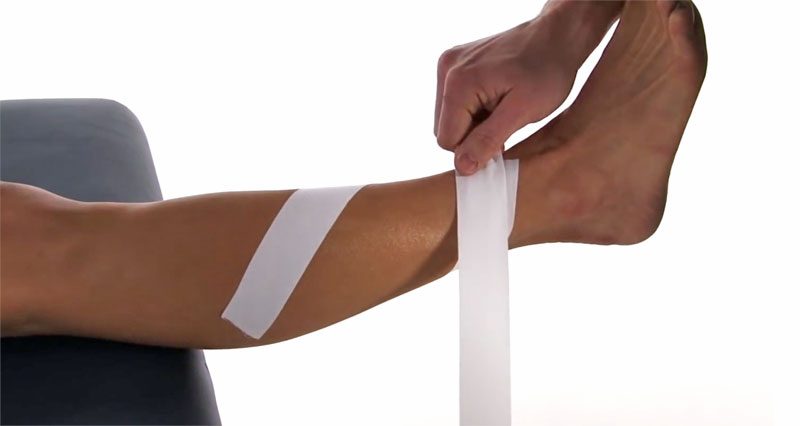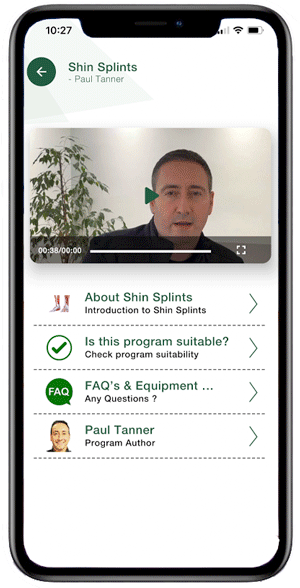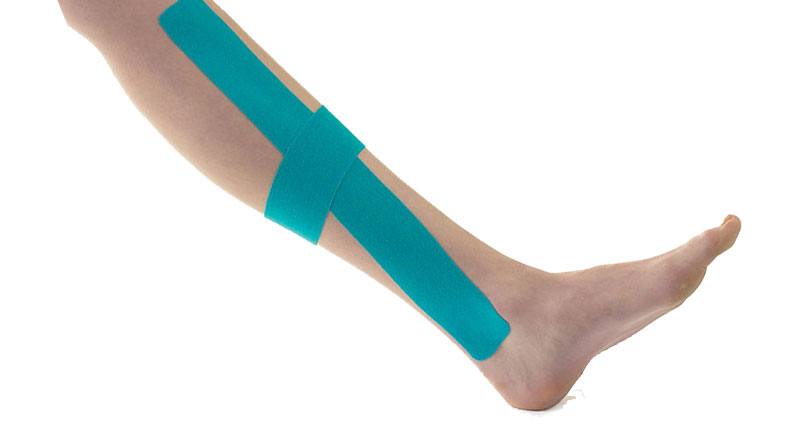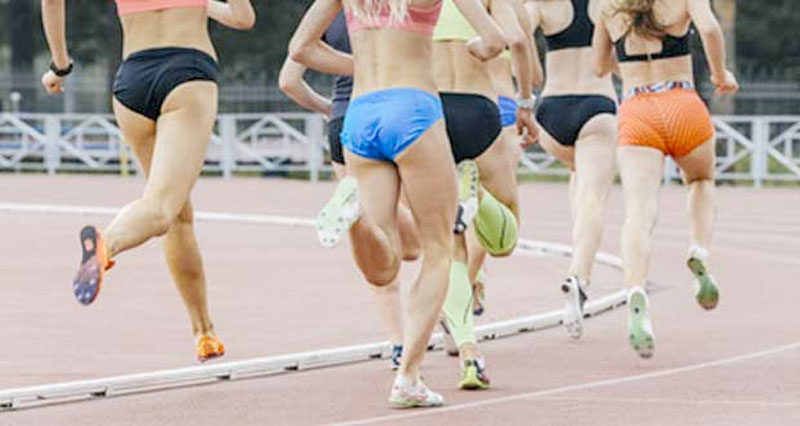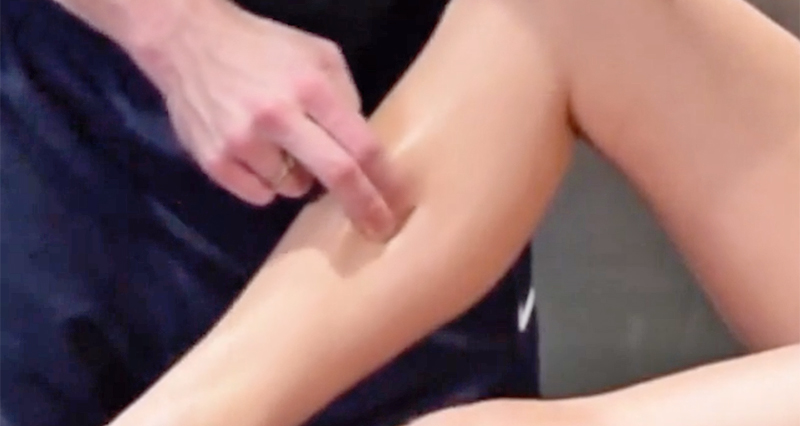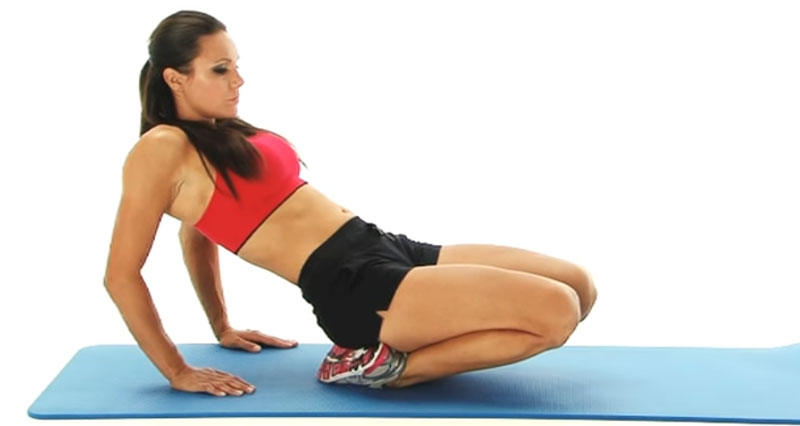This simple shin splints taping technique can help with recovery from shin splints pain on the inside of your lower leg (medial tibial stress syndrome).
How to tape for shin splints
Aim of taping
The aim of this shin-taping technique is to reduce pain on the inside of the shin by supporting the muscles and reducing traction forces over the tibia (shin bone).
Often shin pain is caused by inflammation of the periosteum (sheath surrounding the bone). Applying tape ‘pulls’ the muscles towards the bone. This helps support them and reduce forces pulling on the periosteum.
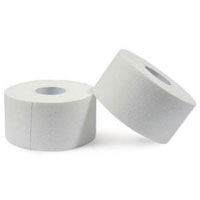
Zinc Ocide Sports Tape
When should I apply shin splints taping?
Taping can be used to relieve shin pain and allow inflamed tissues to recover.
It can be applied as much as is comfortable in the early acute stages, especially if you have to be on your feet a lot.
Tape is effective for a short time as it gives or stretches slightly losing its effectiveness. You may need to re-apply every couple of hours depending on your activity.
Later as you gradually increase training loads back to normal levels you may wish to apply tape just for training runs. This will give some extra support as you gradually increase training loads.
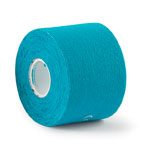
Buy Kinesiology Tape
What materials do I need?
In most cases, all you need is a roll of 2.5cm nonstretch zinc oxide-type sports tape.
Be aware if you are allergic to latex or anything else contained in some sports tape.
If you are particularly hairy then you may like to use spray adhesive and under wrap. However, you will get the best results by applying tape directly onto your leg. Shave the area if necessary.
How to apply shin splints taping
Apply a strip of tape starting at the front of the ankle, around the outside, and underneath your leg in a spiral, finishing on the outside of the upper shin.
Apply a slight pull on the tape as you pass across the inside of the shin. Not too tight, but enough to ‘pull’ the lower leg muscles up towards the tibia (shin bone).
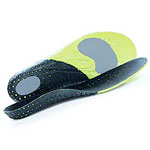
Arch Support Insoles
It is important you apply the tape in this direction as applying it in the other direction will support the muscles on the outside of your shin (appropriate for anterior compartment syndrome).
Next apply the second strip of tape in the same way, slightly higher and overlapping, and the first strip.
Make sure you do not have any kinks or folds in the tape.
If necessary apply a third strip of tape but this is optional.
